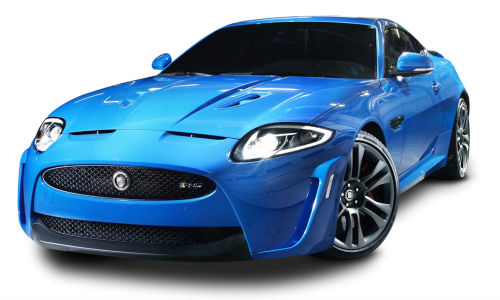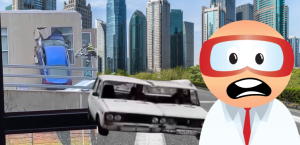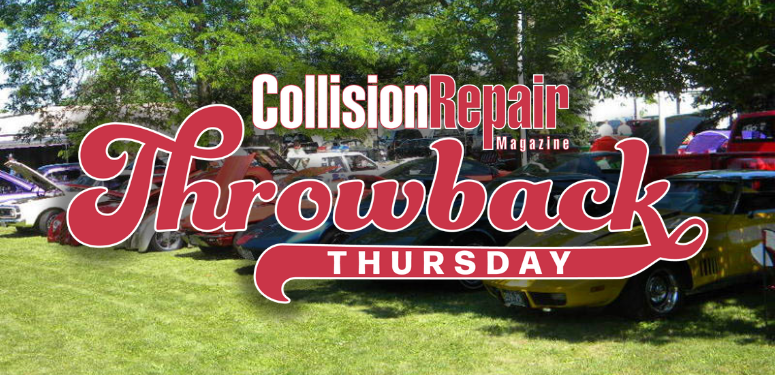By Jeff Sanford
Toronto, Ontario — May 17, 2017 — In this week’s edition of Friday Fun, we look at how blue is coming back as a popular colour for cars, Vancouver somehow manages to increase traffic congestion without increasing the number of cars, how one economist believes fossil fuel vehicles will disappear within eight years and much, much more!
– Blue is coming back as a popular colour for cars, according to a report by Quebec weekly The Suburban. “Colour preference varies over the years. Green cars enjoyed some popularity in the 1990s, but account for only a very small part of the market now,” according to the story. “Based on the paint selections that auto manufacturers typically make two to three years in advance, [PPG confirms] that blue will become the popular colour in the next few years.”
– The Quebec government has issued a warning to thousands of people who are just now returning home after flooding—do not try to start your car. The province is warning residents that, “At no point should you try to start a flooded car.” The warning applies, “… to all road vehicles and recreational vehicles, like ATVs and motorcycles, as well as RVs and trailers … The exception is heavy machinery like farm tractors and snow blowers.” According to a report by the Montreal Gazette, the “car could be dangerous because it could malfunction on the road. It could also cause health problems because of mould growth”
– Vancouver is an amazing city in many ways. In fact, it’s so amazing that they’ve got increased congestion, but with the same number of cars: “Traffic in Vancouver is getting worse even as the number of vehicles on the road stays the same, concludes a report from the city’s transportation department as it prepares to measure and tackle congestion.”
The Globe & Mail reports that the city’s transportation director blames the increased congestion on “more active” streets. Cars now share the road with movie sets (the number of filming permits is up by 2,000 from the 3,000 it was at two years ago according to the story). As well, “Permits to dig for utility lines have also jumped. There are more pedestrians, more bicycles, more buses, more of many other things besides cars on the road.” The report notes that part of the problem is that traffic officials don’t know exactly how bad traffic is. “Current engineering traffic counts measure how many vehicles travel on a road, not how much time it is taking to get anywhere,” according to the report. “Statistics the department provided previously showed there was no change in morning traffic volumes on Burrard Street, Granville Street and the Lions Gate Bridge between 2011 and 2014…’But we’re absolutely certain it has slowed down,’ said Dale Bracewell, a transportation-planning manager.”
– A story in UK tabloid The Sun notes that car thieves in that city are now using “key fob lock jamming” devices to steal items out of cars. When a thief sees someone locking their car with a fob they activate the device. This blocks the signal and leaves the car unlocked. “The boss of a Romanian car wash gang has boasted he pockets up to £20,000 a day using key fob jammers to break into vehicles,” according to the paper. The thief was talking to an undercover Sun reporter.
– A study reported on by the The Record finds that, “One in three high school students reports riding with a driver who has been drinking and one in five got in a car with a driver that consumed marijuana.” The study was performed by the University of Waterloo. It found that, “Half of all students in Grades 11 and 12 admitted to at least one risky behaviour, either driving after drinking or using marijuana or being a passenger in the car of an impaired driver.” The researchers at the Propel Centre for Population Health Impact found close to, “… 20 percent rode in cars with a driver who used marijuana in the previous two hours.”
– The Toronto Star reports that Volkswagen Canada has recently “resumed selling some of its scandal-plagued diesel cars at dealerships across the country, despite still being under investigation for allegedly using software on those same models to cheat emissions tests.” A federal government official was quoted as saying in the story that they are, “looking into the matter to determine the most appropriate course of action … In the United States, Volkswagen got the green light to resume selling 2015 2.0-litre diesel engine models that are undergoing emissions modifications in two phases … In Canada, the government’s investigation into certain Volkswagen vehicles with model years from 2009 to 2015 is still in progress.” Volkswagen Canada spokesperson Thomas Tetzlaff was quoted as saying, “Canada’s vehicle emission standards are aligned with those of the United States … All vehicles are being modified in accordance with the approved emissions modification prior to sale.”
– Ontario continues to make some random efforts to get consumers to shift to electric vehicles. A promise to set up thousands of charging stations recently fell short. Now the government has opened a learning centre, “… where people can learn about electric vehicles and take them for a test drive has opened in Toronto with the help of $1 million from the Ontario government.”
– A report from an economist at Stanford University has spread like wildfire through the eco-community. The report’s single astounding conclusion—that no more petrol or diesel cars or trucks will be sold anywhere in the world within just eight short years—is the claim catching all the attention. Many others are ridiculing the report. And for good reason. Considering the natural rate of turnover for a majority of the vehicle fleet is at least a decade, this epic shift would have to start this afternoon.
Nevertheless, this is the claim of the economist. His name is Tony Seba, and the report is called Rethinking Transportation 2020-2030. It seems to have gone viral this week and has generated dozens of media reports. The National Post published a take on the work and noted some of the claims in the report, which states that, “We are on the cusp of one of the fastest, deepest, most consequential disruptions of transportation in history.”
Seba claims auto dealerships will disappear by 2024 and goes on to predict that, “Cities will ban human drivers once the data confirms how dangerous they can be behind a wheel. This will spread to suburbs, and then beyond. There will be a ‘mass stranding of existing vehicles’. The value of second-hard cars will plunge. You will have to pay to dispose of your old vehicle.” There’s nothing quite like some good old way-over-the-top hyperbole from an economist over-excited about a couple of new ideas.
Taking up some of the current talk around automated vehicles, Seba has charted potential trends onto a timeline that seems, well, ridiculous. Not letting anything like reality hold him back, Seba goes on to say that, “It is a twin ‘death spiral’ for big oil and big autos, with ugly implications for some big companies on the London Stock Exchange unless they adapt in time … The entire market for land transport will switch to electrification, leading to a collapse of oil prices and the demise of the petroleum industry as we have known it for a century.”
The National Post story notes that Seba thinks the “tipping point” will arrive “over the next two to three years as EV battery ranges surpass 200 miles and electric car prices in the US drop to $30,000. By 2022 the low-end models will be down to $20,000. After that, the avalanche will sweep all before it.” No word on where all the charging stations will come from. Nevertheless, “What the cost curve says is that by 2025 all new vehicles will be electric, all new buses, all new cars, all new tractors, all new vans, anything that moves on wheels will be electric, globally,” according to Seba. We’ll see. But this is one prediction to take with a huge grain of salt.
– An interesting note in the Detroit Free Press suggests that, “Automakers and oil companies are working together on creating high-octane fuels that lower fuel consumption and increase performance, but you haven’t heard a lot about it because they could be pretty pricey …” According to the report, “… producing the components that go into boosting octane is more expensive than the gas we’re all used to … [But] development work on super-premium gasoline grades and engines to take advantage of them is going on behind the scenes while automakers and oil companies around the world ponder how to sell the public on the idea … Despite the price, automakers are pondering the switch to high-octane fuels because it allows them to run higher compression ratios in engines and use more energy from gasoline … some believe it’s the lowest-cost way to increase fuel economy and lower emissions.”
The Free Press story quotes an industry executive (who requested anonymity because his company’s plans are secret), as saying, “Ten cents a gallon more is probably palatable. A quarter risks customer acceptance.”





































